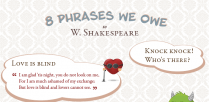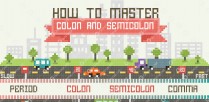We all want sometimes tell about something that was told us before. So we use the Sequence of tenses to make a reported speech.
Here I will give you some examples of how, and when we use these rules. You can take the grammar from this lesson as a grammar table to refer to when you need it.
To describe the simultaneous action in a direct speech we use quotation marks and preserve the time in each part of the sentence:
- I said, “I don’t want to listen to you!”
- She said, “He is singing at the concert hall. We have to hurry.”

To describe the simultaneous action in a reported speech we use the sequence of tenses:
- I said that I didn’t want to listen to you.
- She said that he was singing at the concert hall, that we had to hurry.
To describe the previous action in direct speech once again we use quotation marks:
- I said, “I have found a new direction for my business.”
- You said, “I have been waiting for two hours.”
- They said, “We sent her a doll for the Christmas.”
- She said, “I was working on your project all day.”
To describe the previous action in a reported speech we use the sequence of tenses:
- I said that I had found a new direction for my business.
- You said that you had been waiting for two hours.
- They said that they had sent her a doll for the Christmas.
- She said that she had been working on your project all day.
To describe the subsequent action in a direct speech we use quotation marks:
- I said, “I will meet him tomorrow.”
- They said, “We will be doing these exercises on Saturday.”
To describe the subsequent action in a reported speech we use the sequence of tenses:
- I said that I would meet him tomorrow.
- They said that they would be doing those exercises on Saturday.
As one of my students said to make a conclusion: the sequence of tenses is changing the tense in the phrase to the previous one.
1) So if we have a verb in Present tense, we change it to the Past tense.
2) If our verb is in Past tense already, we use the Past Perfect tense.
3) If the phrase should be in Future, we write the verb in Future in the Past.
Isn’t this easy?






